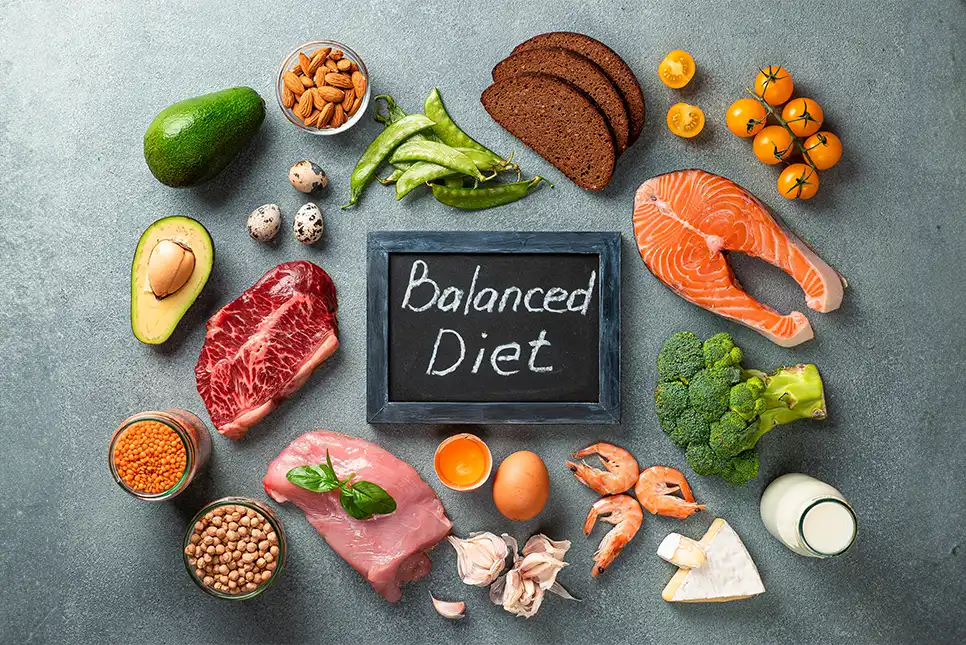Good nutrition is the foundation of a healthy life. What you eat directly affects your energy levels, mood, and overall well-being. But with so much conflicting information out there, it can be challenging to understand what a truly balanced diet looks like. In this article, we’ll explore the importance of balanced nutrition and how you can incorporate it into your daily routine for optimal health.
1. What is Balanced Nutrition?
Balanced nutrition means consuming a variety of foods that provide all the essential nutrients your body needs to function properly. This includes a mix of macronutrients like proteins, carbohydrates, and fats, as well as micronutrients like vitamins and minerals.
Key components of balanced nutrition:
- Proteins: Essential for building and repairing tissues.
- Carbohydrates: The body’s main source of energy.
- Healthy fats: Crucial for brain health and hormone production.
- Vitamins and minerals: Support immune function, bone health, and more.
2. Why is Balanced Nutrition Important?
Eating a balanced diet has numerous benefits for both your physical and mental health. It helps maintain a healthy weight, supports immune function, improves mood, and reduces the risk of chronic diseases such as heart disease, diabetes, and cancer.
Benefits of balanced nutrition:
- Increased energy: Balanced meals help stabilize blood sugar levels, giving you consistent energy throughout the day.
- Better digestion: Eating a variety of fiber-rich foods aids in digestion and supports gut health.
- Improved mental clarity: Certain nutrients, like omega-3 fatty acids, are essential for brain function and can help improve focus and memory.
- Stronger immune system: A diet rich in vitamins (like C and D) and minerals (like zinc) helps strengthen the immune system.
3. How to Create a Balanced Plate
Building a balanced plate doesn’t have to be complicated. Following simple guidelines can help you ensure you’re getting the nutrients your body needs at every meal.
How to structure a balanced plate:
- Half your plate should be filled with vegetables and fruits. Aim for a variety of colors to ensure you’re getting a wide range of nutrients.
- A quarter of your plate should consist of lean proteins like chicken, fish, tofu, or legumes.
- A quarter of your plate should be whole grains like brown rice, quinoa, or whole wheat pasta.
- Healthy fats: Don’t forget to include a source of healthy fats, like avocado, olive oil, or nuts.
4. Common Nutrition Myths Debunked
There are many misconceptions about nutrition, and it’s essential to separate fact from fiction to maintain a healthy diet.
Myth #1: “Carbs are bad for you.”
Truth: Carbohydrates are a vital source of energy. Focus on complex carbs like whole grains, fruits, and vegetables.
Myth #2: “Fat makes you fat.”
Truth: Healthy fats, like those found in avocados and olive oil, are essential for brain health and don’t lead to weight gain when consumed in moderation.
Myth #3: “You need to detox regularly.”
Truth: Your body naturally detoxes itself through your liver and kidneys. Focus on eating whole, nutrient-rich foods instead.
5. Simple Tips for Better Nutrition
Adopting healthier eating habits doesn’t have to be overwhelming. Here are a few simple tips to get started:
- Eat more whole foods: Focus on fresh, minimally processed foods like fruits, vegetables, and whole grains.
- Plan your meals: Planning ahead can help you make healthier choices and avoid unhealthy snacking.
- Stay hydrated: Drinking enough water is crucial for digestion, energy, and overall health. Aim for at least 8 glasses a day.
- Listen to your body: Pay attention to hunger and fullness cues, and avoid eating out of boredom or stress.
Balanced nutrition is about more than just counting calories; it’s about giving your body the fuel it needs to thrive. By incorporating a variety of whole foods into your diet and avoiding processed junk, you can improve your health, boost your energy, and feel your best every day. Start making small changes today, and you’ll see big improvements in how you feel!




